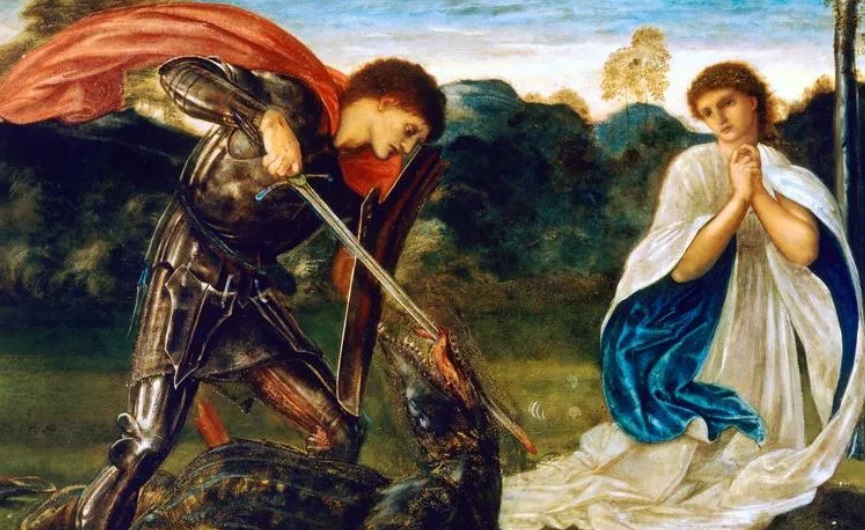We cannot say that facts do not matter, but in the case of St. George, perhaps we can argue that the particulars of his life, fantastical or otherwise, do not alter the truth for which he died. G.K. Chesterton wrote:
“Fairy tales do not give the child his first idea of bogey. What fairy tales give the child is his first clear idea of the possible defeat of bogey. The baby has known the dragon intimately ever since he had an imagination. What the fairy tale provides for him is a St. George to kill the dragon.”
The legend of George and the Dragon is not real, but the truth that it reveals most certainly is.
There is evil in the world, true evil that seeks to devour all that is good and innocent. In stories it breathes fire and flies. In history it can take the shape of despots like the man who ordered St. George’s death. The bloodlust of the dragon was real, even if its scales were not, and it has not died but continued on to plague our world in all its insidious forms and iterations. But just as the dragon’s brutality was no fable, neither was the bravery of the man who fought it. This courageous faith in the face of evil has echoed through the centuries, to be emulated by knights, soldiers, kings, and even the children brandishing their wooden swords on St. George’s Day.
St. George surely never fought a dragon. But he did defy an emperor and stare without flinching into the eyes of his torturers and executioner, unyielding in his faith. No fair maiden awaited him at the end of his trial in life, but upon his death, no doubt, the gentle arms of Christ’s mother clasped him, bringing him to the throne room of her Son.--CNA








Total Comments:0